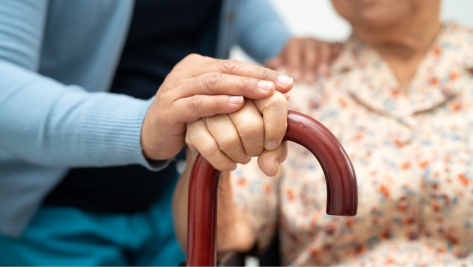Material contribution in medical claims: Williams v The Bermuda Hospitals Board

In recent years, the courts have wrestled with the doctrine of material contribution in cases involving medical negligence. On one view, a case fails if the patient fails to show the injury would probably have been avoided “but for” the negligence. On another view, that same case may succeed if the patient can show that the negligence materially contributed to the adverse outcome.
The law on material contribution follows Bonnington Castings v Wardlaw [1956] in which an employee contracted pneumoconiosis as a result of inhaling air containing silica dust at work. The pneumoconiosis was caused by the gradual accumulation of dust in the lungs. The dust consisted of “guilty dust” and “non-guilty dust” from two sources but only one of the sources amounted to a breach of duty by the employers. The employee succeeded in showing that the “guilty dust” had materially contributed to the injury.
The case of Bailey v MOD [2008] Re-affirmed the position to the distaste of those defending medical negligence claims, so much so that when the Privy Council decided to consider the issue in the case of Williams v The Bermuda Hospitals Board in January 2016, the NHS Litigation Authority intervened in an attempt to re-establish “but for” causation or, at least, re-frame the law on material contribution. Those efforts failed.
Mr Williams had a CT scan in Bermuda after complaining of abdominal pain but it was not carried out expeditiously and he developed appendicitis. His appendix ruptured and sepsis ensued which caused myocardial ischaemia (reduced blood flow to the heart). At trial, the judge held that Mr Williams had failed to prove on but for principles that these complications would probably have been avoided with appropriate treatment. On appeal, it was said the question was not whether the negligent delay was the cause of the myocardial ischaemia but whether it materially contributed to the injury. It unquestionably did and the case was to be referred back to Hellman J for assessment of damages. However, the Hospitals Board then appealed to the Privy Council in London.
Lord Toulson, sitting in the Privy Council distinguished “guilty” sepsis (attributable to the negligent delay) from “innocent” sepsis (which had already begun irrespective of the delay) and in applying Bonnington held that the indivisible injury (myocardial ischaemia) was the resulting effect of both. Therefore, it could not be said that the myocardial ischaemia would have occurred in any event. Mr Williams succeeded on causation by proving that the negligence had materially contributed to the process and therefore materially contributed to the myocardial ischaemia.
In a decision which supports patients it seems that, for the moment anyway, claims will succeed on causation where, on a balance of probabilities, it is shown that the medical negligence has materially contributed to an indivisible injury. Further, distinctions between single agents or multiple agents and cumulative or consecutive causes add little value and should be abandoned.
The distinction between a divisible and indivisible injury is, however, important for these purposes. As yet the courts have been inconsistent in giving guidance as to what constitutes an indivisible injury.
* Disclaimer: The information on the Anthony Gold website is for general information only and reflects the position at the date of publication. It does not constitute legal advice and should not be treated as such. It is provided without any representations or warranties, express or implied.*
Please note
The information on the Anthony Gold website is for general information only and reflects the position at the date of publication. It does not constitute legal advice and should not be treated as such. It is provided without any representations or warranties, expressed or implied.
Our Latest Injury & Medical Claims Insights
- September 26, 2025
Intermediate track injury claims: the rise of early settlement offers
- August 26, 2025
Anthony Gold Solicitors welcome Helen Whittam as a new Support and Rehabilitation Coordinator in the Injury and Medical Claims Team
- August 19, 2025
Contributory negligence and children
- August 13, 2025
Video: From tragedy to triumph – Eliezer’s journey after a life-changing accident
- July 9, 2025
What is Contributory Negligence and How Could it Affect Your Claim?
- June 18, 2025
Hobson v Hammond and another [2025] – when is an omission to investigate symptoms illogical?
Latest Articles
View allGuide: September 26, 2025
Guide: September 26, 2025
Contact us today
"*" indicates required fields
Contact the commercial
& civil Dispute team today
"*" indicates required fields
Contact the Conveyancing team today
Contact the Conveyancing team today
Contact the Wills, Trusts
& Estates team today
Contact the Court of
Protection team today
Contact the Employment Law team today
Contact the Clinical Negligence team today
Contact the Family & Relationships team today
Contact the Personal Injury Claims team today
Contact the leasehold & Freehold team today
Contact the Corporate & Commercial team today
Contact the housing & disputes team
"*" indicates required fields














